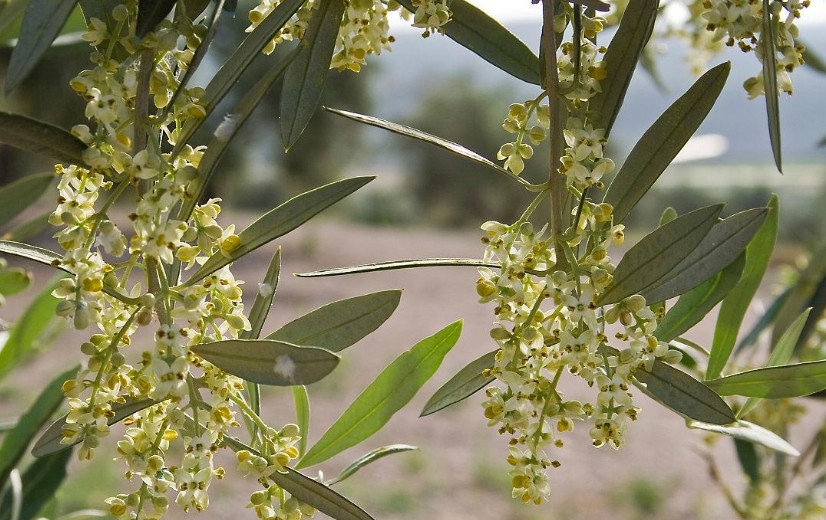Why My Tea Olive Tree Dropping Leaves?
Written by Ivy
Feb 23 2023
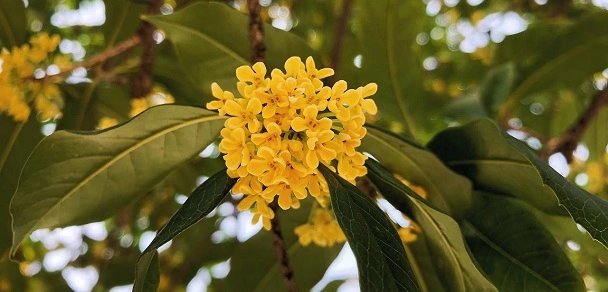
In this guide, let's look into the most common reasons your olive leaves are dropping or turning yellow and the uses or benefits of olive leaves.
Watering Issues
Most of the reasons why tea olive trees drop leaves are caused by improper watering. Tea olive trees generally grow very luxuriant branches and leaves. They need water every day to maintain the growth of the Olive tree. If the watering amount is less when the weather is hot, the leaf water will evaporate, the leaves will dehydrate, and then fall. More water will accumulate water, leading to the decay of the plant roots and stop water supply, Leaves will drop without nutrition.- Solution: adjust the watering amount, temporarily avoid light, and remember to water frequently after the dropping leaves plants recover. Pay attention to dry and wet. Don't wait until the soil is dry and cracked. If the root of the plant is rotten, dig it out, cut off the Olive tree's rotten root, disinfect it, and then replant it.
Fungal Infection
Tea olive tree pests and diseases will also cause it to lose its leaves. For example, brown spot, blight and anthrax will cause the nutrient loss of dropping leaves, resulting in the loss of nutrients on tea olive leaves, which will wither and fall.- Solution: what if the leaves of potted tea olive fall off due to pests and diseases? The solution should pay attention to the prevention of pests and diseases. But before that, first move tea olive to a well lit and ventilated environment, and then spray chemicals according to what insect diseases. It is best to spray 50% carbendazim after 1000 times dilution with water, 2 ~ 3 times.
Extreme Temperature
Tea olive tree is not cold resistant. If the temperature is too low in winter, the leaves of tea olive tree will fall all the time. In severe cases, it will also make the leaves drop out and stop the possibility of new buds the next year.- Solution: if the leaves have started dropping, put the potted plants in a warm environment and then bask in the sun. It's best to wrap a layer of plastic film outside the trunk to keep warm and antifreeze, and finally cut off some branches and leaves of tea olive tree, so as to reduce water transpiration and improve frostbite.
Reduced Light
Tea olive tree likes sunshine. Only sunshine can make its plants flourish. If tea olive trees grow in dark and dark places for a long time, they will not only be short and weak, but also have the risk of soot disease and leaf falling.- Solution: move the potted plants to a sunny environment, especially in winter, be sure to put them in the sun, otherwise there will be a phenomenon of plant leaves falling, and an appropriate amount of ventilation.
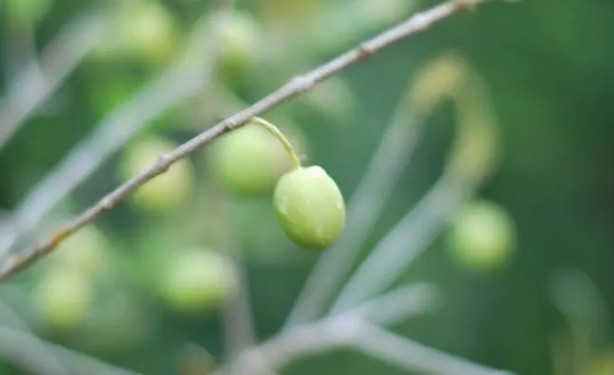
Tea Olive Tree Outdoor Placement
Tea olive is a woody plant. It is not suitable to be placed indoors for too long in summer. Generally, it should be placed outdoors for about 2-3 days for about a week to bask in the sun and drink dew. Otherwise, tea olive will drop leaves or turn yellow in the four seasons and finally die.Rotten Roots
Tea olive likes to be wet. Therefore, during the maintenance process, many people are afraid that tea olive cannot grow normally due to insufficient water, so they try their best to water it. But it's not a flood in tea olive. Avoid serious ponding in the basin. Otherwise, the root system of tea olive will rot, unable to absorb nutrients and grow normally. Cause the leaves to dry and fall.- Solution:
How to Prevent Potted Tea Olive from Dropping leaves?
- Autumn Topdressing
Read More: How To Fertilize Tea Olive Tree?
- Proper Watering
- Antifreeze in Winter
- Sufficient Light
- Prevent Diseases and Pests
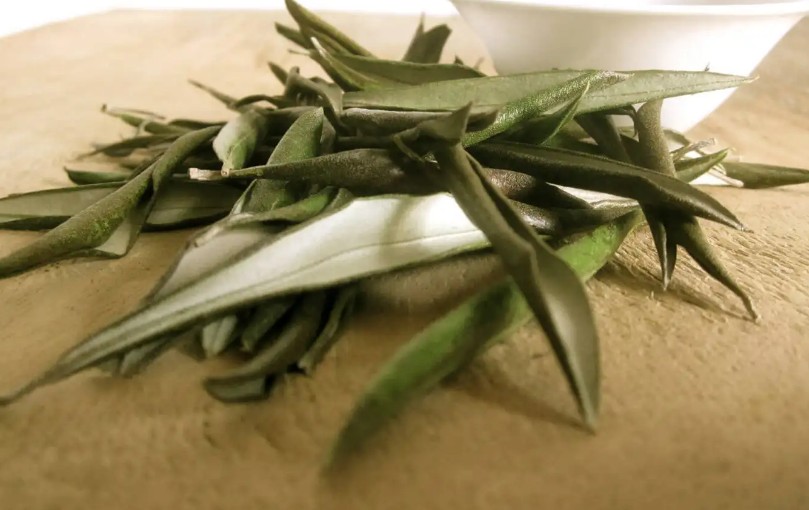
Yellow Leaves in Olive Tree
Olive tree leaves that are turning yellow may indicate that the tree is either not getting enough nutrients or is not getting enough water. The yellowing of the leaves is also brought on by insufficient sunlight and frequent weather changes. Yellow leaves can also be caused by peacock spot and, rarely, root rot.
Problems Causing Yellow Leaves in Olive Trees
Overwatering
Overwatering is the most common reason for yellow leaves.
For instance, if the tree receives too much water, the soil will become submerged, which will reduce aeration. This leads to the roots decaying or rotting, which causes the leaves to turn yellow and dry up.
The yellowness that develops on the tree when it is overwatered takes the form of a mosaic rather than a solid yellow color.
In addition, the leaves have crunchy brown tips, but they do not drop.
Underwatering
Underwatering the olive tree is a further issue with water. The olive tree's leaves are not given the crucial nutrients they require when you submerge it.
If you water the tree, it may recover, but the damage has already been done, and the leaves will start to turn yellow and fall off.
One advantage of olive trees is that they respond to water changes gradually; symptoms only become apparent after a few weeks.
The yellowing of the leaves is frequently noticed after it has received adequate watering.
Although you have watered it, the damage has already been done, so this is very perplexing. You could misunderstand this and overwater it by thinking it needs more water.
Changes in Weather
Olive trees do shed their leaves even though they are essentially evergreens. Two to three years is the average leaf's lifespan.
Although it can occur at any time of the year, leaf yellowing and fall are most common in the spring.
Except when a sizable number of leaves are impacted, this kind of yellowing and leaf decline is not a cause for alarm.
Poor Sunlight
The tea olive tree plant will suffer greatly if you put it inside or in a very dark place. The Olive's leaves will first start to turn yellow.
It is impossible to carry out photosynthesis when the olive tree does not receive enough sunlight.
Chlorophyll, which is necessary for giving leaves their green color, cannot be produced by a plant if photosynthesis is not occurring. which in turn causes the olive leaves to turn yellow and discolored.
Insufficient Nutrients
Lack of essential nutrients like iron or nitrogen could also be the cause of your olive leaves turning yellow.
The leaves of your olive tree will discolor if it is not receiving enough magnesium, nitrogen, iron, or potassium, which are nutrients it needs.
When young leaves start to turn yellow, manganese deficiency is undoubtedly present. Old, yellow leaves, on the other hand, signify a magnesium deficiency.
A soil test can be performed to determine the state of the nutrients in the soil.
Sometimes nutrients are present but inaccessible because of pH issues. Give the soil a stronger treatment in accordance with the issue.
For example, yellow leaves indicate a nitrogen deficiency; consequently, nitrogen must be applied to the soil frequently.
Similarly, a deficiency in iron leads to chlorosis, which is indicated by yellowing leaves.
In order to treat your soil appropriately, test your soil to determine which nutrients are deficient.
Peacock Spots
Olive tree leaves also turn yellow when peacock spots or black spots appear on them. During their growing season, olive trees frequently experience this problem.
It is a blemish that a fungus caused. Insects and bad weather can easily spread these spots to other leaves.
The most difficult issue facing an olive tree gardener is parasite or pest infestation. Pests not only sap the nutrients, but they also spread a number of diseases.
The most common sap-sucking insects that cause yellow leaves on your Olive plant include aphids, mealybugs, spider mites, and scales.
The plant will experience a ton of other issues if these are not immediately resolved.
How to Prevent Yellow Leaves in Olive Trees
Here are a few tricks you can use in order to avoid the tree from turning yellow when you grow the olive tree in the container:
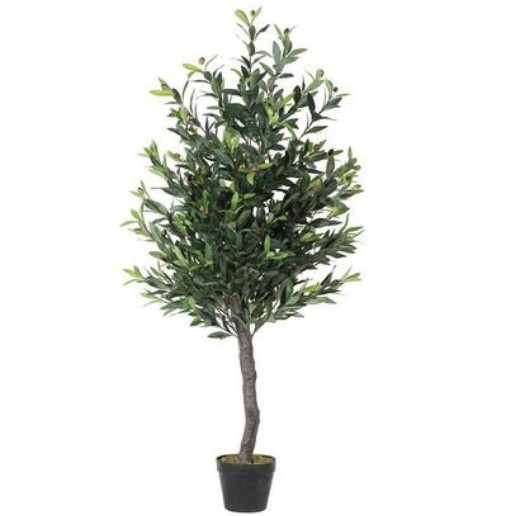
Nourish the Tree Well
To grow healthily, the olive tree needs each and every essential nutrient.
If properly nourished, it won't have peacock spots and won't experience any problems if given all the necessary nutrients.
Although you can give it regular waterings, it will be a good idea to add additional nutrients to the soil.
To improve the soil's nutritional quality, you can add liquid fertilizer to Olive trees. Your olive tree will become healthy and content as a result.
Every year, add 0.7 to 1 kg of nitrogen to help olive trees mature. Apply fertilizer in the spring to encourage growth, in the summer to promote tree health, and in the winter to promote fruit development.
Maintain Soil Moisture
While avoiding overwatering, make sure the soil is consistently moist. Olive trees prefer moist soil and don't contract any diseases from leaves. It does very well in moist soil.
This is possible by employing a good irrigation system and giving the tree adequate aeration. The container should have drainage holes so that the extra water can be flushed away.
Inhibiting root rot is another benefit of this. Avoid overly dry soil, though, as this can also result in yellow leaves.
Olive Tree Leaves Uses
Olive tree leaves can be used in a variety of ways, including to make tea, an extract, and even an olive leaf powder. According to the advantages outlined in the following section, it will help you stay healthy and treat some types of symptoms.
Let's now examine various applications for olive tree leaves.
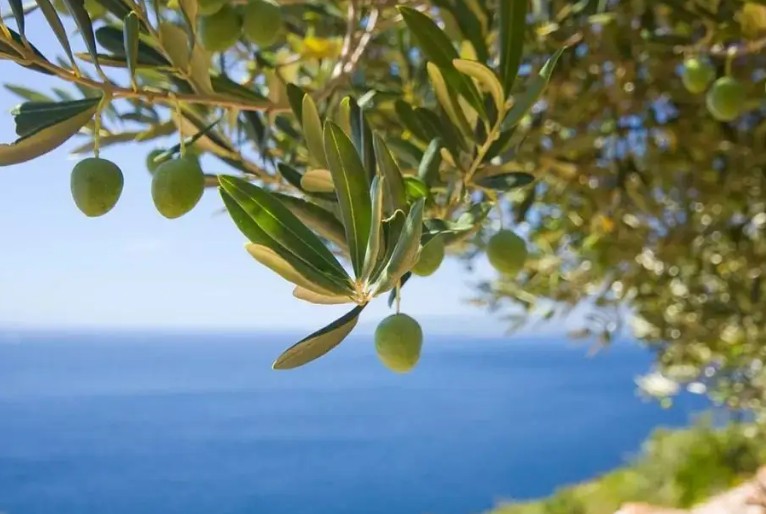
1. Olive Leaves Tea
By heating up some water and putting dried olive tree leaves in it, you can make a tea. Though sweeter, it has a taste that is similar to green tea. Consume two cups daily to reap the benefits. You could also include some ice or sweetener.
2. Olive Leaf Extract
Olive tree leaves were used to make the olive leaf extract. Oleuropein, the substance that makes up its active ingredient, has anti-inflammatory and antioxidant properties. Therefore, it is healthy for your body and will aid in the prevention of diseases like cancer.
3. Olive Leaf Powder
Olive tree leaves can be ground into a powder. For ease of consumption, it can be mixed with other foods. An olive leaf supplement that can be taken daily is olive leaf powder which has been turned into a capsule.
Olive Tree Leaves Benefits
There are numerous advantages of olive tree leaves, which function as an antioxidant, immune booster, and a natural defense against colds and flu.
1. Reduces Cardiovascular Disease
Consuming olive tree leaves on a regular basis in a variety of forms can lower the risk of heart disease. Your heart may be healthier as a result. To prevent future heart attacks and other types of heart failure, it can regulate the heartbeat.
2. Lowers Blood Pressure
Olive tree leaf tea will lower your blood pressure if you have high blood pressure. Both balancing your cholesterol levels and removing harmful cholesterol from your body are possible with olive-leaf tea consumption. Additionally, it doesn't contain any caffeine, giving you more energy.
3. Helps Treat Type 2 Diabetes
Olive tree leaves can assist in the treatment of people with type 2 diabetes by restoring normal insulin levels. According to one study, patients who drank 330 millimeters of olive leaf tea had lower triglyceride levels. The glucose will once more be converted into energy as a result.
4. Improves Your Brain Function
Olive tree leaves can help the brain get more oxygen if you use them and eat them frequently. Consequently, due to this effect, it will improve brain function. Additionally, it can aid in preventing early memory loss and mental deterioration as you age.
5. Eliminates Free Radicals
The body should regularly rid itself of free radicals. Olive tree leaves contain the antioxidants your body needs to eliminate them. The olive tree leaf contains antioxidants that are potent enough to counteract the negative effects of free radicals.
6. Boosts Immunity
In order to combat various diseases, your immunity levels should always be at their highest. Use olive tree leaves to strengthen your immune system. Olive tree leaf extract is more potent than vitamin C because it contains antioxidant levels that are four times higher.
7. Fights Herpes
The ability of olive tree leaf extract to treat viral infections, including Herpes, is well known. The olive tree leaf has antibacterial, antiviral, and anti-inflammatory properties. Because of this, it can prevent the viral infection from spreading throughout the body. The treatment of rashes also involves combining it with honey.
8. Reduces Inflammation
The anti-inflammatory properties of olive tree leaves allow them to lessen inflammation. It is an effective method for avoiding illnesses and infections. To help your body naturally fight infections, there are several ways to consume olive tree leaves.
9. Prevents Cancer
Regularly using olive tree leaves will aid in cancer prevention. This is due to the anti-inflammatory, antiviral, antibacterial, and antioxidant properties it possesses. It can aid in cell regeneration and eliminate cancer cells before they pose a threat to the body.
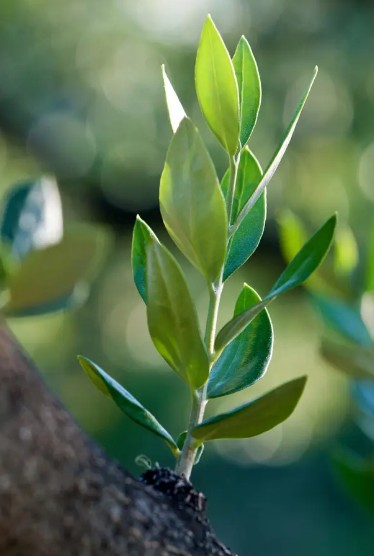
General FAQs About Olive Leaves
Can You Eat Olive Leaves?
You can eat olive leaves, though it is not advised to eat them in large amounts. Some cultures use the consumption of olive leaves in rituals or to treat unpleasant symptoms.
How to Prune Olive Leaves?
You can use thinning cuts, not heading cuts since the latter will stimulate new tall growth. Cutting something off is what heading cuts, also known as topping cuts, do, whereas cutting something out is what thinning cuts entail. For olive tree trimming, you should typically make thinning cuts.Is Chewing Olive Leaves Good?
Yes, fresh olive leaves are unprocessed, which accounts for their high antioxidant content and numerous health benefits. Yaman residents are known for chewing and eating olive leaves, and it's said that Yemenis have never had diabetes.
How to Dry Olive Leaves for Tea?
You can air-dry olive tree leaves for tea or use a food dehydrator to do so. Olive leaves, like other herbs, are delicate and require low heat. Even though many people do dry their leaves in an oven on low, I still think that the temperature is too high for olive leaves.
Olive leaves should be well spaced apart to ensure adequate air circulation, whether you're using a food dehydrator or the air-dry method. Put the dried olive leaves in a lovely, airtight container once they are completely dry.
Latest Updated
- Why My Tea Olive Tree Dropping Leaves?
- Can You Divide Peace Lily Plants - When Should You Split
- How to Prune Peace Lily Plants - 2023 Essential Guide
- How to Growing Peace Lily In Water - Step by Step Guide
- How To Grow Peace Lilies Outdoors - Ways & What to Pay Attention
- Peace Lily Root Rot - Signs & How to Treat
- Why Is My Peace Lily Not Blooming - Causes & How to Get Them Bloom
- How Long Do Peace Lilies Last - How to Make Them Live Longer
- Peace Lily Turns Black - 10 Causes & How to Fix
- When & How to Fertilize Peace Lilies - 2023 Essential Guide
Popular Articles
- Winter maintenance of Antirrhinum Majus
- How to Grow Terminalia Mantaly Tree
- How to Grow and Care for Crossostephium Chinense
- How to grow Antirrhinum Majus in spring
- Peristeria Elata (Dove Orchid) Profile: Info & Care Guide
- Underwatered Snake Plant (Sansevieria Trifasciata) - Signs And How To Fix
- How to Care for Brazilian Jasmine Plant (Mandevilla Sanderi)
- Rosa Chinensis (China Rose): Plant Growing & Care Tips
- How to Grow & Care for Graptopetalum Purple Delight in Summer
- How to Care for Baby Sun Rose (Aptenia Cordifolia)
